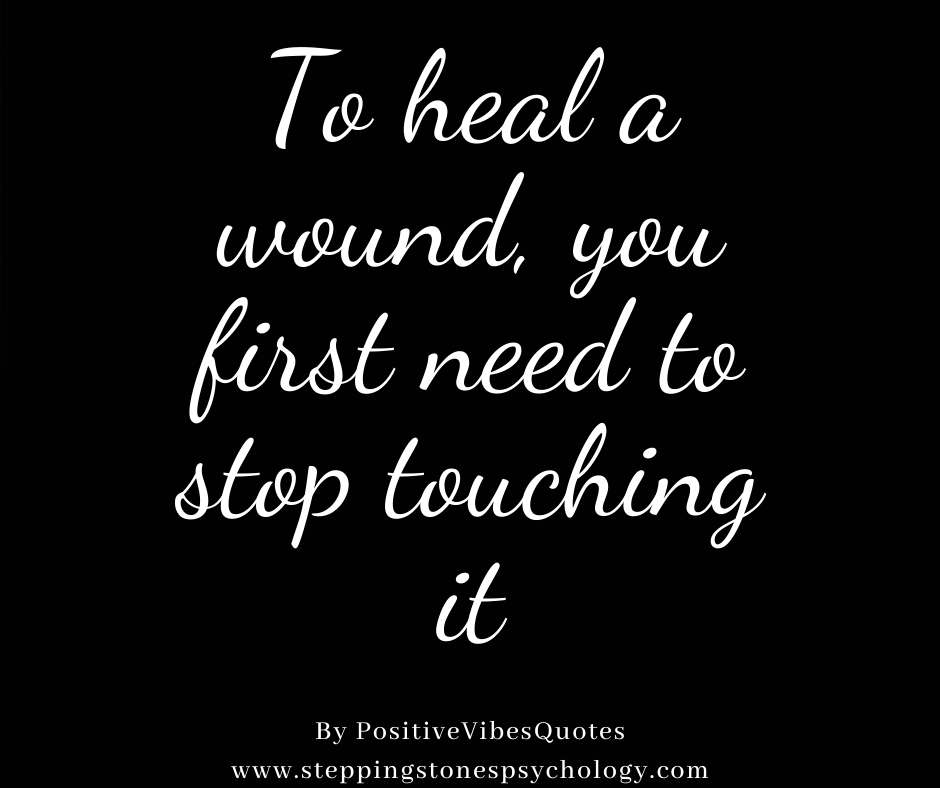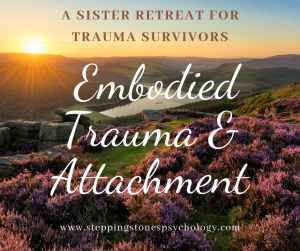I saw a meme quoting “To heal a wound, you first need to stop touching it”. I would say, I believe that it is more the other way round:
To heal a wound, you would need to stop pretending it is not there and stop just putting a plaster over it. Instead, you are going to touch it, hold it and nurture it. Really hold it – like you are going to hold it and just sit with it. Sit with all the discomfort, pain, anguish and emotional suffering it has to offer. Sit with it without rushing the process. Making it feel seen, heard and held. Then you will explore it, safely and gently – one layer by layer, baby steps, at its own pace. You will explore where the root of that wound comes from, then you nurture those roots. You may even have to take the bad weeds out in order for the roots to grow stronger and healthier. Once this is done, the wound may not have to be touched again. You may even be convinced that it never ever needs to be touched again, but it will show you that you were wrong. It will make it very clear to you that healing is not linear and straight-forward. Nope. It will show you that it is one big messy spirally ongoing journey, where you keep healing one new layer of the wound at a time or that you have to keep going back to the same old layer of the wound to work on it a little more because there was still some unhealed (or unprocessed ) parts of the layer left to heal.
As quoted by Wendy Andrews: Some of us don’t have a choice in the matter anyway…..it’s like the wound seeks US out, touching US, saying, “I need a little help and connection here”.
The wound – the emotional pain… Sit with it. Welcome it. Go into it – not away. Talk to it. What does it need? What is it telling you? Acknowledge all its big emotions. Cry if you can. Sob. Punch the pillow. But just don’t swallow it down, or distract it away. Acknowledgement and validation are very powerful parts of healing. It will get better, another layer of your healing will be done after you have accepted the wound, emotional pain and suffering. Whether that’s void, loss, abandonment, betrayal, abuse, violence, incest, sense of being unloved, grief…
Accepting your wound does not mean you are accepting what happened to you, or that you are forgiving the people who hurt you/treated you wrong (you can do the latter if and when you are ready). No, it means you are accepting that what happened to you wasn’t fair or right. You accept that it was and is painful, that even after all this time, you still feel the unbearable emotional pain. Most importantly, you accept that you are so worthy and deserving of healing.
It may take many many many years for each layer to be lifted and more to come out, and that is OK. It does not mean you have failed, or that you are taking a step backwards. It means you are moving forward. Healing is not a linear journey that consists of a checklist of tick boxes. It is spirally and very messy with more knots to untangle. Yet, it is powerful, transformative and empowering.
Finally, it is important not to brush things under the carpet like ‘let’s leave what happened in the past in the past’. Often we are advised, either directly or indirectly, to put a plaster over our wound (a bit like in the meme here). Usually, others advise us to do this or make comments hinting us to do this because seeing or hearing us having a hard time is making THEM uncomfortable. This can be confusing to you and you may notice that you are not being true to yourself. Perhaps what may help you in these moments is to remind yourself, that this is about them and their discomfort, and not about you and your healing journey. Perhaps, it is a trigger for them and they want to fix things or put a ‘positive’ spin on things to avoid their own discomfort. Rather than allowing you to sit with your pain (and them with their own discomfort), they may be trying to dismiss or minimise your experience in order to block their own big emotions away. Having this awareness and being able to externalise it like this may help you navigate these awkward moments and continue to move forward in your healing journey with integrity and authenticity.
©2020 Stepping Stones Psychology. All Rights Reserved




